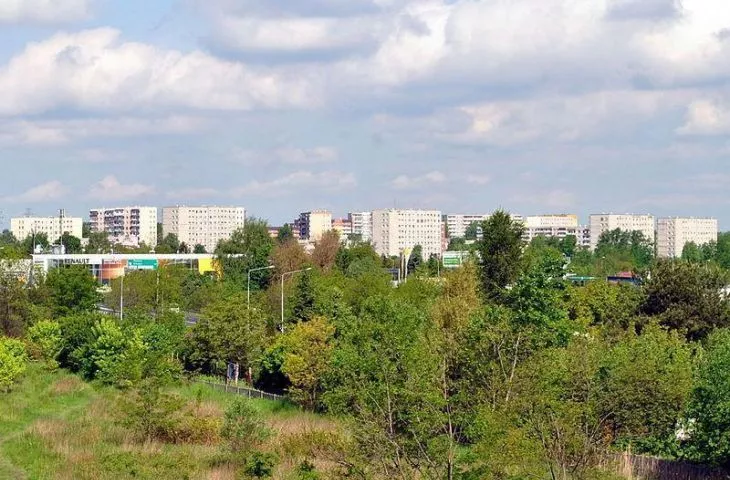At the end of December, the City of Katowice announced a tender for the construction of the Witosa Municipal Cultural Center, along with the development of adjacent areas in the form of a park. Are we again faced with an abandonment of quality and a hasty circumvention of the new law on public procurement law, which came into force at the beginning of this year?
The facility, which has been talked about for years, but will only now come to fruition, is to be built on the Witos Estate in the area of Kwiatkowskiego and Grabskiego Streets. The issue was raised back in the election campaign of Katowice Mayor Marcin Krupa, who promised community centers on the Witosa and Paderewskiego estates. To this end, public consultations were held, during which residents could submit their proposals, as the construction of the MDK is an important issue for the local community. In a communiqué at the end of July, we read about rather ambitious project plans. Indeed, the MDK is to be equipped with a multifunctional hall for organizing events and cultural activities with a stage, as well as a pull-out auditorium, including, among other things, a ballet room, a dance and movement room, an art studio, a ceramics studio with aceramic kiln or other necessary rooms and premises for the implementation of tasks and ongoing activities of the community center in the field of upbringing, education and dissemination of culture. Also, the functions and use of the park, into which the facility will be integrated, have been defined quite precisely. The execution of the park is to include, among other things, meeting places for residents, community gardens, educational paths of a natural-historical nature, forms of small architecture or the provision of rainwater harvesting for watering, and thus the use of ecological forms of irrigation, such as dry rivers or dry ponds.
Accelerating implementation
But how to combine the ambitious plan with the price criterion, which is crucial for the tender? It provides for the development of two variants of architectural and urban planning concepts, along with the determination of estimated implementation costs for each variant. The company that wins the tender will have three years from the signing of the contract to implement the project, and three months to execute and deliver the variant concept, as well as materials for public consultation. When asked to comment on the matter, Michal Lyczak of the Katowice City Hall's Department of Social Communication said:
The construction of a Cultural Center on the Witosa Estate has been signaled for many years, and in January 2020 we received a report on the public consultation. This is an investment expected by the residents of the district. Therefore, in order to accelerate the implementation of the project, a decision was made to announce a tender for the creation of design documentation. It was preceded by the creation of a two-variant architectural and urban planning concept. The two variants suggested are to give the opportunity to choose the most optimal solutions, both functional and with more interesting visual, aesthetic and architectural qualities. The variants also concern the use of different environmentally friendly technologies or materials, which will translate into the cost of this project.
good and bad facility
But will this kind of investment really provide interesting visual, aesthetic and architectural qualities? A clear position on this issue was expressed by Robert Konieczny of KWK Promes, who stated that:
In a city famous for its good architecture, no one has learned from what has been achieved through previous competitions. This is an absolute lack of logic in action. The same was true recently for the Culture Zone, where a multi-level parking garage was to be built as a result of a tender. It was only after numerous protests that a competition was finally held, and as a result, good architecture won. So much luck, unfortunately, did not have the interchanges created as a result of the tenders. They were supposed to be a showcase of the city, they became an urban nightmare. The fact that the city is going in the direction of tendering is simply stupid and illogical. The cost of building a good facility and a bad one are close to each other, and in comparison, the cost of holding a competition is really small. It is sometimes worth adding those few pennies so that the city has a facility it can boast about. This is the path followed, for example, by Szczecin, which consistently implements more objects created in competitions.
A question of quality
Probably not without significance here is the fact that after several years of planning, it was not until the end of 2020 that the tender for the MDK was organized. It is no coincidence that with the beginning of this year, a new law took effect, concerning the public procurement law of September 11, 2019. It significantly modifies the existing regulations regarding architectural competitions. From now on, holding a competition will be an obligation in the case of architectural or architectural-construction design, if the project contains creative solutions within the meaning of the Law on Copyright and Related Rights of February 4, 1994. If these facts are combined, then the creation of a place conducive to the needs of the local community, a place of high usability, aesthetic and ecological standards, for these are, after all, the city's goals, can be blurred by tender solutions. The argument also does not seem to be about speeding up construction, which residents have been waiting for several years anyway. Most likely, a little more time wouldn't make a difference, and let's remember that the issue is quality and subsequent years of use. Is it then a matter of actually achieving social and aesthetic goals, or is it more of a formal project to tick off?














